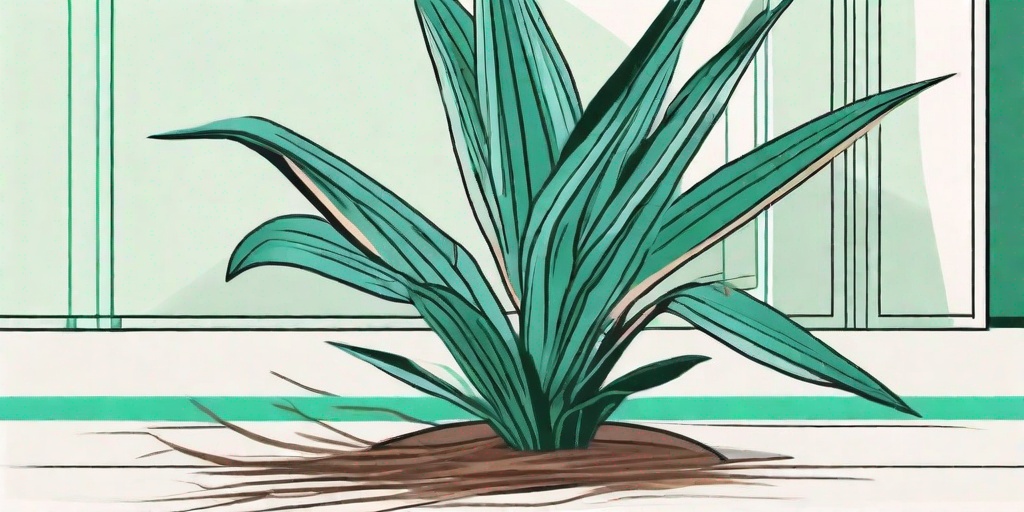
Welcome to the world of indoor gardening, where the stakes are low, but the rewards are high. If you're reading this, chances are you've fallen in love with the elegant Dracaena, a plant that's as easy on the eyes as it is hardy. But alas, even the toughest of plants can fall victim to the dreaded brown leaf syndrome. But fear not, dear reader, for we have the antidote to your leafy woes. Buckle up and get ready to dive into the world of Dracaena care.
Understanding Your Dracaena
Before we delve into the nitty-gritty of Dracaena care, let's take a moment to appreciate this plant's unique characteristics. Dracaenas are tropical plants, native to Africa, that have adapted well to indoor conditions. They're known for their striking, sword-like leaves and their ability to tolerate a range of light conditions. But don't let their tough exterior fool you. These plants have feelings too, and brown leaves are their way of communicating distress.
There are several reasons why your Dracaena might be sporting a brown leaf or two. It could be due to overwatering, underwatering, low humidity, or exposure to extreme temperatures. But don't worry, we're not here to judge. We're here to help you diagnose the problem and find a solution. So, let's roll up our sleeves and get to work, shall we?
Diagnosing the Problem
Overwatering
Like a guest who overstays their welcome, too much water can be a problem for your Dracaena. These plants prefer their soil to dry out between waterings, and overwatering can lead to root rot, which in turn can cause leaves to turn brown. If your plant's leaves are yellowing before they turn brown, or if the plant is losing leaves from the bottom up, you might be dealing with an overwatering issue.
How can you tell if you're overwatering? Check the soil. If it's constantly soggy, or if you're watering more than once a week, you might need to cut back. Remember, Dracaenas are more tolerant of underwatering than overwatering, so when in doubt, hold off on the H2O.
Underwatering
On the flip side, not enough water can also cause brown leaves. If your Dracaena's leaves are browning from the tips inward, or if the plant is losing leaves from the top down, you might be dealing with an underwatering issue. Other signs of underwatering include wilting or curling leaves.
How can you tell if you're underwatering? Again, check the soil. If it's bone dry, or if you're watering less than once every two weeks, you might need to water more frequently. But remember, it's better to underwater than overwater, so don't go overboard.
Low Humidity
Dracaenas are tropical plants, and they like their air on the humid side. If your indoor air is too dry, your Dracaena might respond by browning at the leaf tips. Other signs of low humidity include curling or yellowing leaves.
How can you tell if your air is too dry? You might notice that your skin feels dry, or that you're getting static shocks more often. You can also use a hygrometer to measure the humidity level in your home. If it's below 40%, you might need to increase the humidity for your plant.
Fixing the Problem
Adjusting Your Watering Routine
Now that we've diagnosed the problem, it's time to find a solution. If you're overwatering, try cutting back to watering once every one to two weeks. If you're underwatering, try watering once a week. Remember to check the soil before you water. If it's still moist, hold off on watering.
One way to ensure you're watering correctly is to use the "soak and dry" method. Water your Dracaena thoroughly, until water runs out the bottom of the pot, then let the soil dry out completely before watering again. This mimics the plant's natural watering cycle and can help prevent overwatering and underwatering.
Increasing Humidity
If low humidity is the issue, there are several ways to increase the humidity for your plant. You can mist the leaves with water, place a tray of water near the plant, or use a humidifier. You can also group plants together, as they create a microclimate that can increase humidity.
Remember, it's important to increase humidity gradually, as a sudden change can shock your plant. And be careful not to overdo it, as too much humidity can lead to mold and other issues.
Preventing Future Problems
Now that we've fixed the problem, let's talk about how to prevent it from happening again. The key to keeping your Dracaena healthy is to provide the right conditions and care. This includes proper watering, adequate humidity, and the right light and temperature conditions.
It's also important to monitor your plant regularly for signs of distress. If you notice brown leaves, don't panic. Instead, use what you've learned here to diagnose and fix the problem. Remember, a little brown leaf here and there is normal and nothing to worry about. But if you see a lot of brown leaves, or if the leaves are browning rapidly, it's time to take action.
FAQs
- Why are the leaves on my Dracaena turning brown?
There could be several reasons, including overwatering, underwatering, or low humidity. Check the soil and the humidity level in your home to help diagnose the problem.
- How often should I water my Dracaena?
Generally, you should water your Dracaena once every one to two weeks, but this can vary depending on the conditions in your home. Always check the soil before watering.
- How can I increase the humidity for my Dracaena?
You can mist the leaves with water, place a tray of water near the plant, use a humidifier, or group plants together to increase humidity.
So there you have it, a comprehensive guide to saving your Dracaena from the dreaded brown leaf syndrome. With a little TLC, your Dracaena can thrive and continue to be the centerpiece of your indoor oasis. Happy gardening!















